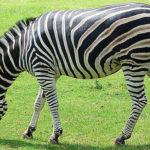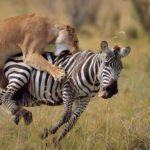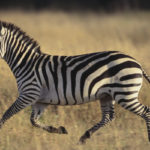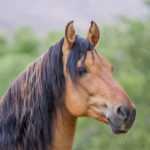26 interesting facts about zebras
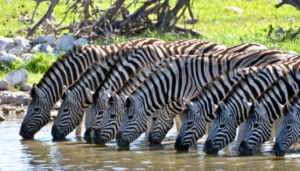 The amazing animals of zebra are interesting not only for their unusual appearance, but also for their developed intellect. Clever and more or less tameable, these creatures in many ways resemble modern horses, but still they are not. Of course, zebras did not play such a role in the development of humanity as horses, but this does not make them less remarkable animals that deserve close attention.
The amazing animals of zebra are interesting not only for their unusual appearance, but also for their developed intellect. Clever and more or less tameable, these creatures in many ways resemble modern horses, but still they are not. Of course, zebras did not play such a role in the development of humanity as horses, but this does not make them less remarkable animals that deserve close attention.
They have a common ancestor with horses and donkeys. These species were divided about 4.5 million years ago.
Zebras can produce offspring, crossing with donkeys and horses. Descendants of zebras and horses are called zebraids, and they are popular in some African countries because of their endurance and resistance to tsetse fly bites.
In the world there are three types of zebras, and, despite the resemblance, from the point of view of genetics, they are no closer to each other than to ordinary horses.
The zebras included quaggae, animals that died out at the end of the 19th century. Now they are trying to revive biologists and breeders.
Mountain zebras live in the mountains at an altitude of up to 2 kilometers above sea level.
The only continent on which zebras are found in the wild is Africa.
In nature, these animals live in small groups consisting of one male, several females and their cubs.
Pregnancy in zebras lasts longer than in humans – about 12 months.
The baby zebra can run after an hour and a half after birth.
The stripes on the skins of these animals are as unique as the fingerprints of a person or the pattern of stripes on the skin of a tiger.
Like horses, zebras usually sleep standing up.
When running, they are able to reach speeds of up to 50-60 km / h.
Wild zebras are poorly tameable, but the foal brought up among people from childhood can be tamed.
Scientists still do not know for certain why during the evolution zebra has become striped.
When a herd of these animals grazes or rests, a pair of them always stand on the clock, vigilantly inspecting the surroundings for creeping predators.
Zebra males have sharp canines, which the females lack. Males use them during fights with rivals.
Females of zebras are monogamous, they follow their male throughout life. But the males always have a harem from females that are not related to each other by family ties.
Thanks to the keen eyesight and the magnificent memory, the zebras easily recognize each other by the pattern of the bands on the skin.
Their stomachs are able to digest even the roughest plant foods that are unsuitable for other herbivores.
Neither horse flies, nor deadly tsetse flies do not bite zebras, since, with their vision, the latter seem to them a flicker of black and white stripes.
Two of the three species of zebras are listed in the International Red Book as species on the verge of extinction.
Zebras usually wander in search of food, but if there is a lot of available food around, they can go on a sedentary lifestyle.
People have been trying to bring out domestic zebras completely for several centuries, but so far without success.
The skin of these animals is completely black.
In ancient Rome, trained zebras were often participants in circus performances.
These animals roll on the ground, in the dust, to get rid of insect parasites.
